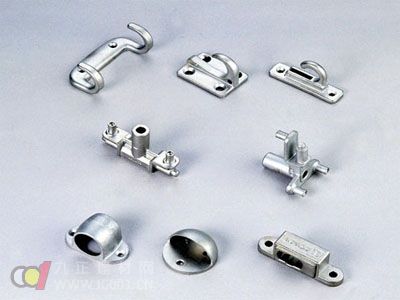Classification of Door and Window Hardware:
First, the hardware accessories of sliding windows: the guide rail for aluminum or plastic window sashes is typically integrated into the frame profile, while the pulley system is mounted at the bottom of the sash. The smoothness of the sliding action depends not only on the quality of the pulleys but also on the straightness of the profiles, machining accuracy, and installation precision. Dust accumulation on the rails and pulleys can significantly affect the sliding function. The locking mechanism is usually a latch type, which may fail due to poor installation or dirt buildup. Some high-end models feature an arched handle design that integrates with the sash profile for improved aesthetics and functionality.

Second, the hardware of casement windows: hinges are essential components of this type of window. Since they allow one-way opening, they are installed in the direction of the opening—indoors for inward-opening windows and outdoors for outward ones. To maintain sealing, metal window hinges are often welded externally. Outer windows typically use rotating card locks, often combined with handles. Internal locks are simpler, such as plug-type mechanisms. However, latches lack the compression effect of rotating locks. Handles on internal windows are independent, while external windows require stoppers to prevent wind from slamming the sash shut. High-quality stoppers are made of copper to resist rust.
Third, hardware for inward tilting windows: this design allows the window to open both inward and outward, offering greater flexibility. When tilted, it provides ventilation, with the top scissor joint acting as a stop. When flat, it functions like a hinge. Inward tilting is ideal for viewing outside and cleaning the glass. Many low-end buildings lack this feature, leading to less clean windows. This hardware includes top scissor connectors, corner joints, locks, handles, connecting rods, multi-point locks, and bottom shafts. It's suitable for wood, aluminum, and plastic windows. Fixing the connecting rod can be done via dual links or pre-designed grooves, with the latter being more durable.
Fourth, hardware for glass curtain walls: integrating curtain wall systems with windows presents challenges. Advanced systems allow inward tilting windows to function as part of the curtain wall, ensuring airtightness and weather resistance. However, this technology is rare in China. For glass curtain walls, hinges are often replaced with four-bar linkages to avoid visible hardware. These linkages allow smooth opening without exposing the mechanism, though they cause a noticeable shift in the window’s center of gravity when opened. This helps prevent accidental closure but complicates installation.
Fifth, multi-point locks enhance wind resistance by using multiple locking points connected via rods. Turning the handle slides these points into the frame, securing the window effectively. This system improves security and is widely used in doors as well.
Sixth, flip window hardware: ordinary flip windows have half the sash opening inward and the other half outward, making sealing difficult. Achieving good sealing requires more advanced hardware, such as two rotating shafts with locks and handles. Some models allow full 360-degree rotation for better sealing and easier cleaning.
Seventh, window openers:
1. Manual window openers are designed to open high-position vents, improving air circulation. They typically consist of a scissor actuator, corner connector, operating member, connecting rod, and cover. The actuator determines the opening size and weight capacity, while the connector adapts to different window types. Handles or rockers are common operating options. Manual openers are cost-effective but require more effort, especially for upper-hung windows. Four-bar linkages should be used carefully due to potential weight issues.
2. Electric window openers use motors and switches to automate the process. Options include rack-and-pinion and chain mechanisms. Dust, moisture, and water can damage the opener, so sealed models are preferred. These devices offer up to 1000 Newtons of thrust and are quiet and energy-efficient. Installation must consider site constraints. Modern systems include greenhouse controls based on temperature, humidity, and light, as well as automatic smoke exhaust systems that open windows during fires to release heat and smoke, enhancing safety.
Exposed Shower Sets,Universal Bathroom Shower Set,Shower Set For Bathroom,Hotel Shower Set
Kaiping Jenor Sanitary Ware Co., Ltd , https://www.jenorsanitary.com